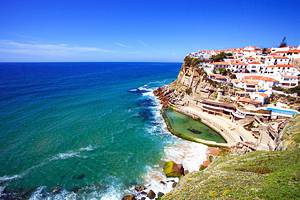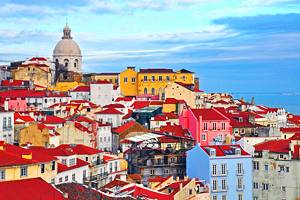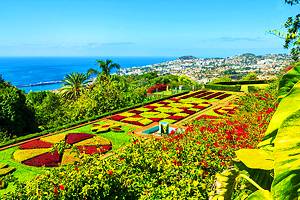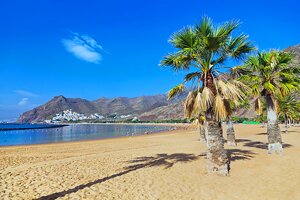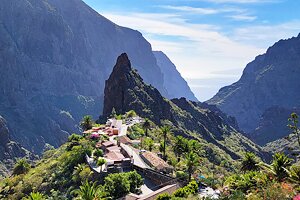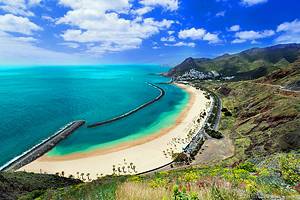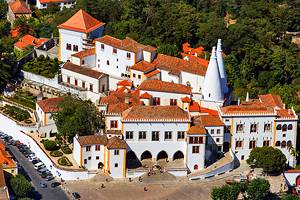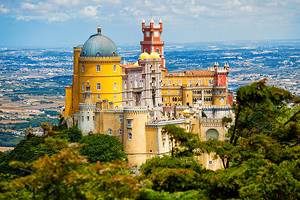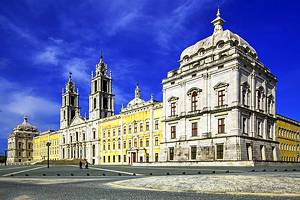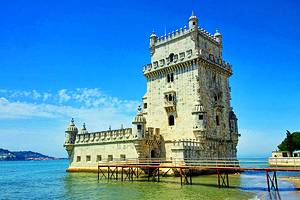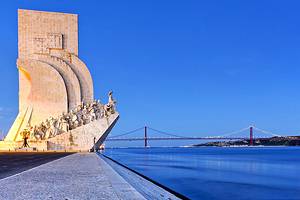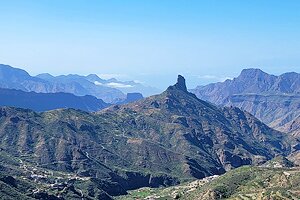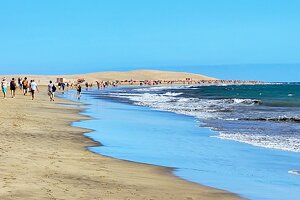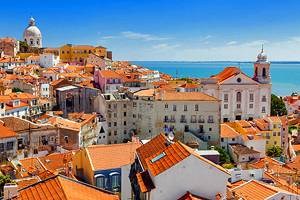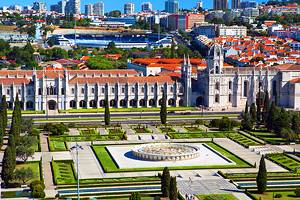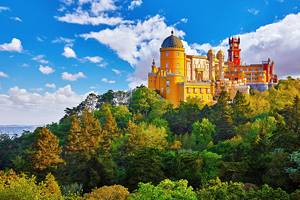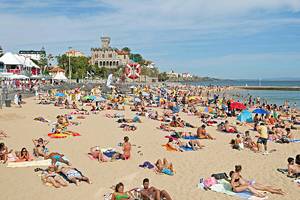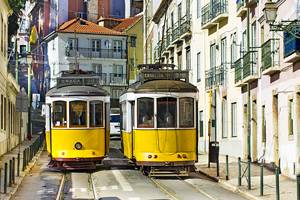Tourist Attractions in Ponta Delgada & Easy Day Trips
Ponta Delgada, on São Miguel, is the regional capital of the Azores archipelago, a string of nine islands in the Atlantic Ocean about 1,300 kilometers west of Portugal's mainland and about a two-hour flight from Lisbon. The town lies on the south coast of São Miguel, the largest island, and is a rewarding introduction to this beautiful and remote Portuguese territory - one of the world's great adventure tourism destinations.
Distinctive architecture of whitewash and black basalt lend Ponta Delgada a monochrome complexion, but this is a town full of colorful character. Spend time exploring its historical center, and you'll discover cobbled squares, museums, well-tended gardens, and handsome monuments built when Ponta Delgada was an important trading port in the 18th and early 19th centuries.
In summer, the waters of the Azores offer fabulous opportunities for whale watching. And there's plenty to see and do inland, too. São Miguel is blessed with dramatic volcanic scenery, such as giant crater lakes and hissing hot springs. Discover the best places to visit in this Azores capital with our list of the top attractions and things to do in Ponta Delgada.
Harbor Front and Historical Quarter
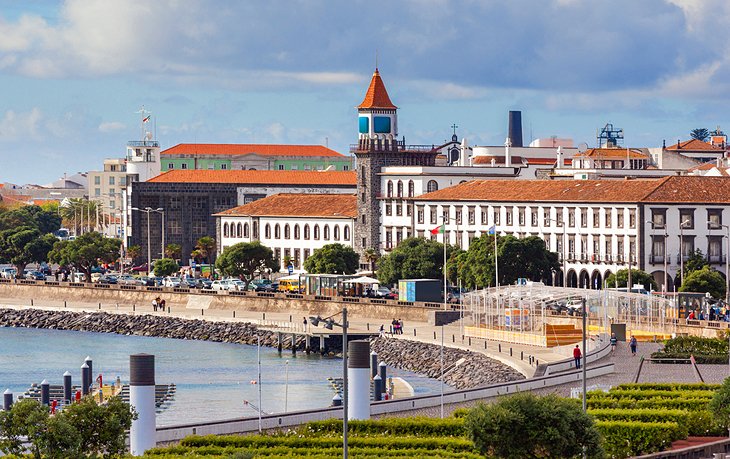
For a pleasant overview of Ponta Delgada, stroll Avenida Infante Dom Henrique, the town's harbor front promenade. Start at its western end, which overlooks the 16th-century Forte de São Brás, a Renaissance fortress that's used today by the Portuguese navy and houses the Azores Military Museum.
Lying opposite is Praça 5 de Outubro on which Convento e Capela de Nossa Senhora da Esperança is located, and the scene of much celebration during the annual Festa do Senhor Santo Cristo dos Milagres.
Continuing on, you'll notice on your left the familiar three arches of the original 18th-century city gates standing resplendent on Praça Gonçalo Velho Cabral and captured countless times by cameras and smart phones.
Cross the square to visit the handsome Igreja São Sebastião before rejoining the avenue and heading towards the marina. This is the place to book a whale watching cruise - one of the "don't miss" things to do in Ponta Delgada.
Enjoy a coffee on the esplanade before turning back to follow your own footsteps, or meander into the city center for a spot of shopping and a bite to eat.
Convento e Capela de Nossa Senhora da Esperança
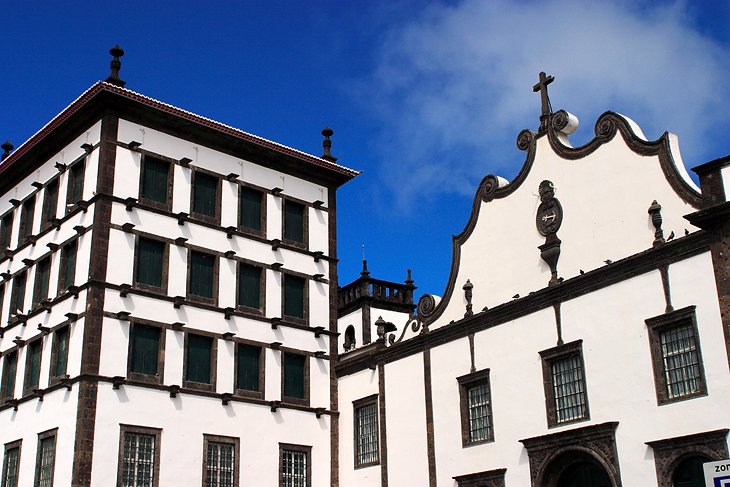
Arguably the most visited of Ponta Delgada's cultural attractions, the Convent and Chapel of Nossa Senhora da Esperança (Our Lady of Hope) was completed in 1541 and is still occupied by nuns of the order of St. Francis.
A veritable treasure trove of religious art, the chapel is embellished with a fabulous canvas of 18th-century azulejos tiles crafted by António de Oliveira Bernardes, the greatest master of the genre. The altar, meanwhile, is a riot of gilded woodwork.
The chapel is associated with the worship of the Christ of the Miracles, and it's the image of Ecce Homo that is revered by locals. Brought to the island in the 16th century, the statue is hidden away in the lower church and can only be viewed at certain hours, when a nun opens the internal gates to allow visitors in to see it. Hold your breath because this is also an opportunity to admire the intricately embroidered vestments, polished reliquaries, and sparkling jewels surrounding the statue.
If you're in Ponta Delgada on the fifth Sunday after Easter, you'll witness the image hoisted aloft by worshippers for a procession to mark the lavish Festa do Senhor Santo Cristo dos Milagres celebration. During the festival, the convent is illuminated at night in spectacular fashion by thousands of glowing light bulbs affixed to the façade.
Address: Praça 5 de Outubro, Ponta Delgada, São Miguel, Azores
Gruta do Carvão
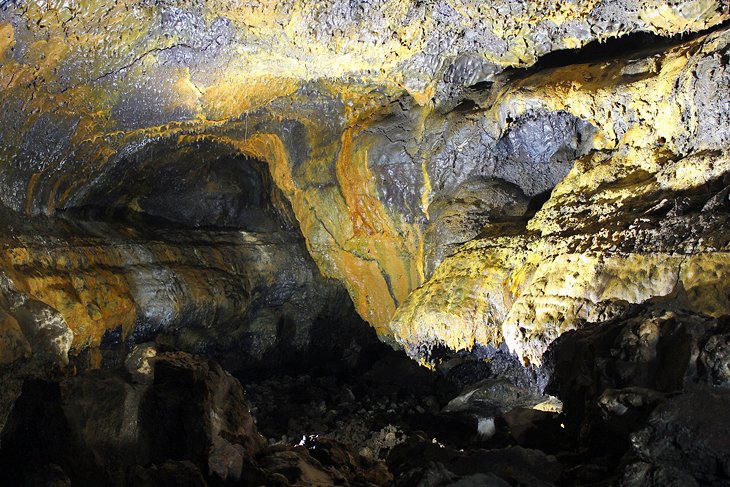
Deep underground, on the northwestern outskirts of the city, is this fascinating site, an ancient lava tube 1,650 meters in length and the longest of its kind on São Miguel. Around 250 meters is accessible to the public, making the subterranean spectacle one of the most unusual visitor attractions on the island.
Guided tours take place on a seasonal basis and afford a fascinating geological jaunt through thousands of years of volcanic activity.
Decorating the cavern walls are speleological structures of bizarre and compelling beauty, including lava bridges and thousands of conical-shaped stalactites. The walls and ceilings appear splashed with rust, in fact the result of basalt oxidization that lends the darkened interior a copper glow when illuminated. Adding texture are secondary mineral deposits of silica, and glaze and tree moulds.
Warm and humid even in winter, this hidden natural wonder lures the adventure tourist, as well as those with an appreciation for the Azores' splendid ecological diversity.
Address: Rua do Paim, 2nd Circular, Ponta Delgada
Museu Carlos Machado-Núcleo de Arte Sacra
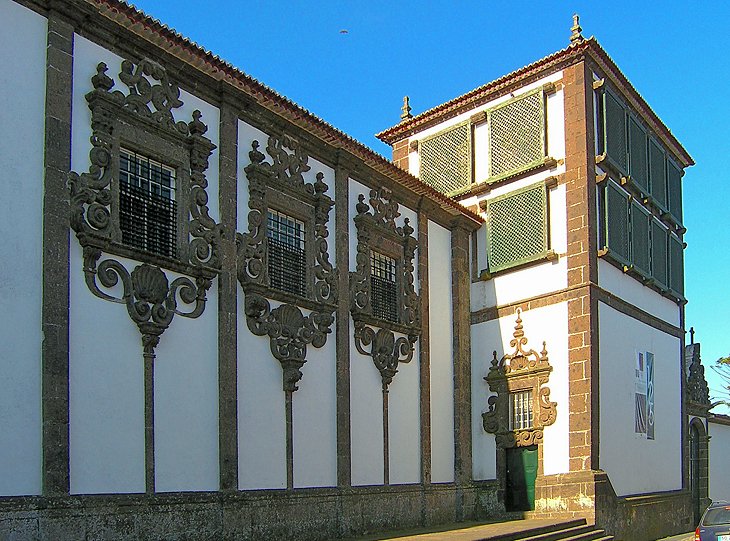
The quirky collection of regional ethnography on display at the Carlos Machado Museum offers a fascinating glimpse into the customs and traditions of island life.
Founded in 1876 and named after its founder, the museum is housed in the former 16th-century monastery of Santo André, and is worth a good hour of your time, especially if visiting with kids - youngsters will appreciate the miscellany of lovely antique toys and trinkets from the early 20th century.
As well as showcasing Sao Miguel's fishing and farming industries, the museum holds a permanent collection of period and contemporary paintings and sculpture, important works that include paintings by local artist Domingos Rebelo (1891-1975).
The museum's separate Núcleo de Arte Sacra houses sacred art treasures, while Machado's own natural history collection is preserved in a dedicated wing.
Address: Rua Machado dos Santos Núcleo de Santa Bárbara, Ponta Delgada, São Miguel, Azores
Igreja São Sebastião
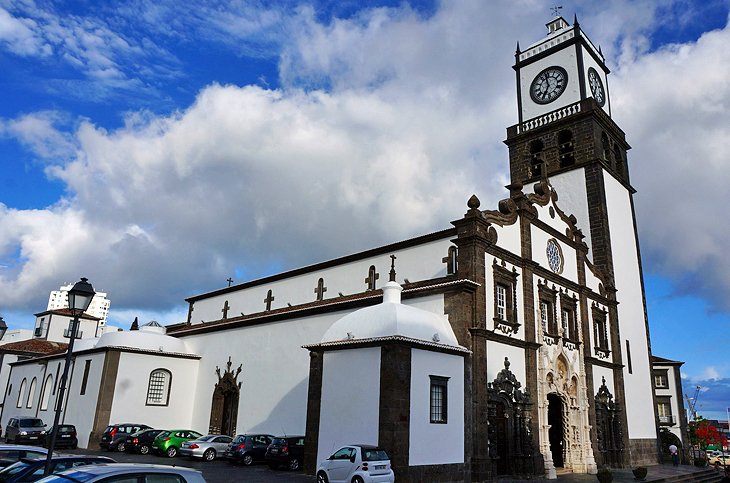
Constructed from the black basalt stone that characterizes all public buildings in the Azores, São Sebastião is Ponta Delgada's parish church. Founded in 1533 originally as a small chapel, the exterior is distinguished by an ornate Manueline portal carved from limestone.
During the 18th century, additions in the Baroque style saw a clock tower built and the interior decorated with beautiful azulejo panels. The sumptuous gilded woodwork embellishing the sacristy and most of the furniture was carved from jacaranda and other exotic timber imported from Brazil.
The best time of day to admire the façade is dusk, when it is bathed in soft, luminous floodlight. The Café Mascote opposite the church provides a suitable vantage point - and an inexpensive snacks menu.
Address: Largo da Matriz, Ponta Delgada, São Miguel, Azores
Teatro Micaelense
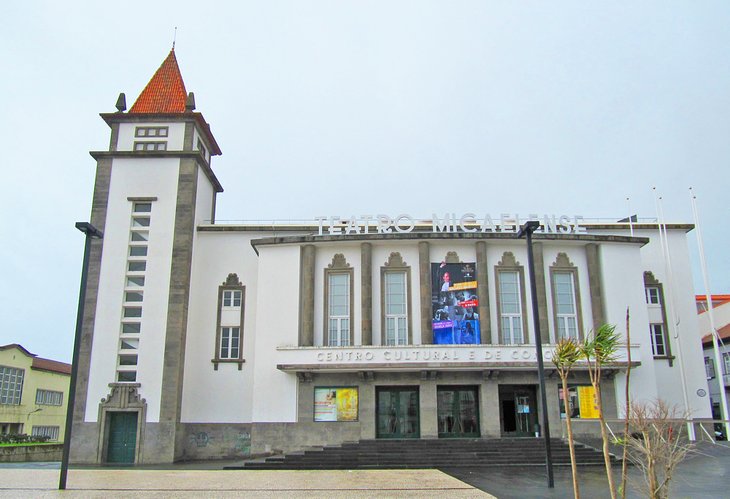
The Micaelense Theater is Ponta Delgada's lively cultural hub, and does the city proud with an eclectic program of performing arts staged throughout the year. Very much at the vanguard of contemporary artistic expression, the theater presents some of Portugal's best-known exponents of experimental dance.
But this is a place full of surprises. One month an audience can be treated to a light-hearted musical; the next, classical ballet. Concerts range from toe-tapping jazz to melancholy fado. Sometimes a bit of rock is thrown in for good measure.
Theater productions are nearly always in Portuguese, so visitors without a good command of the language should instead check out the cinema, which screens films in their original language. Micaelense also doubles as an art gallery; again, it's the modern and abstract that tends to enjoy the greatest exposure.
Pre-booked, one-hour guided tours of the theater, which dates from 1951, raise the curtain over areas of the premises normally closed to the public, including the exterior balconies that afford fine views over the city's historic center.
Address: Largo de São João, Ponta Delgada, São Miguel, Azores
Official site: http://www.teatromicaelense.pt
Arruda Açores Pineapple Plantation
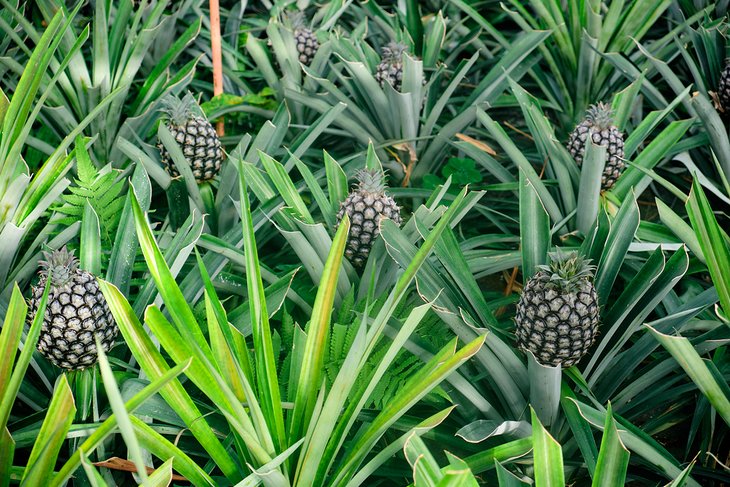
One of the more unusual sightseeing destinations on São Miguel is this well-known pineapple plantation, located on the outskirts of Ponta Delgada. You can see the greenhouses (the Azores are not warm enough to cultivate the fruit outdoors), and tours of the plantation take place every day. Note that the guides are not tourism professionals, and some have limited foreign language skills, not that you need to be told how succulent and delicious this exotic fruit is.
The fruits are for sale. Ask for your order to be packed in a special presentation box. And for a treat, why not purchase a bag of their mouth-watering pineapple boiled sweets to go?
Address: Rua Dr Augusto Arruda, Fajã de Baixo, São Miguel, Azores
Festa do Senhor Santo Cristo dos Milagres
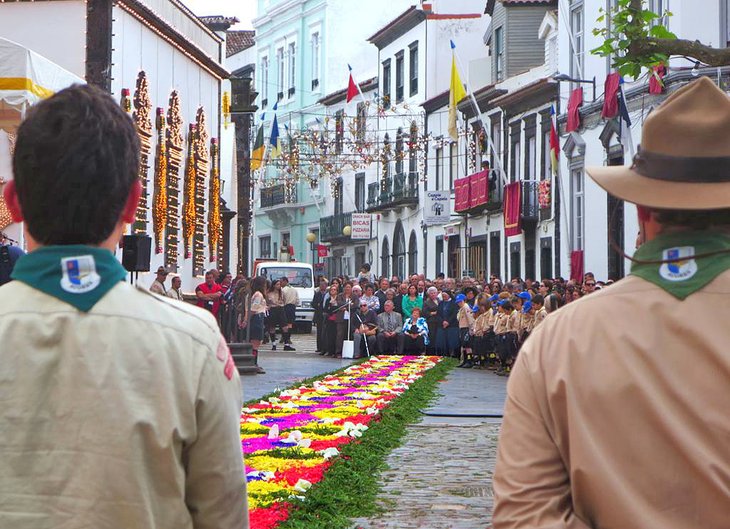
One of the most eagerly anticipated events in the city is the annual festival of Santo Cristo dos Milagres. Held on the fifth Sunday after Easter, this is one of São Miguel's most important religious festivals and attracts pilgrims from all over the world.
The celebrations begin during the preceding week when the Convent and Chapel of Nossa Senhora da Esperança is illuminated, and the surrounding streets carpeted with fresh flowers arranged in geometric patterns.
On the day, the image of Ecce Homo, wrapped in a scarlet and gold robe decorated with woven flowers, is taken from the convent to join a slow-moving procession of townspeople and children. Members of the church lead the procession carrying large, heavy candles. The scene is poignant and hushed, and you can't help being moved by the air of solemnity that descends over the town.
Later, the mood changes considerably when Ponta Delgada celebrates the occasion with a night full of music, dancing, and other festivities.
Dolphin and Whale Watching Tours
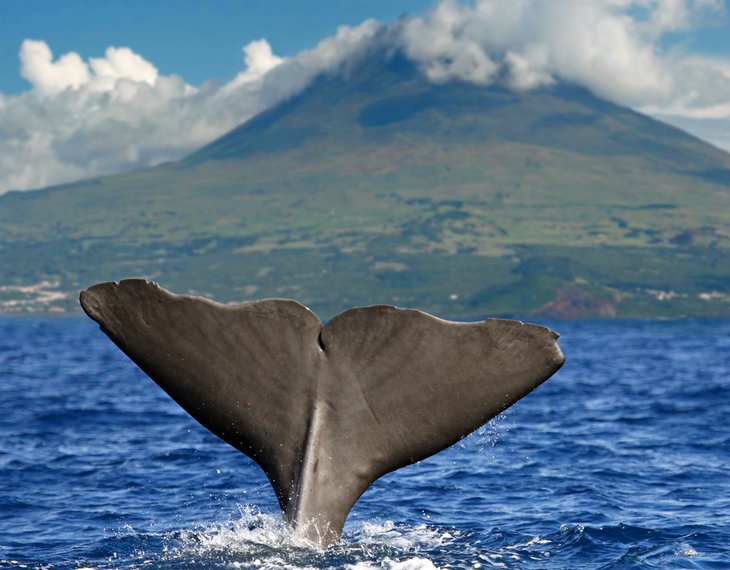
The Azores archipelago is renowned as an outdoor pursuits destination, where you can indulge in all sorts of exciting adventure tourism programs, anything from hiking, canyoning, and horseback riding to kayaking, surfing, and big game fishing. But there's one activity synonymous with this remote group of islands: whale watching.
Some 25 species of cetaceans can be found in the nutrient-rich waters of the Azores, with the sperm whale the most frequently observed.
The best time to see these majestic mammals is between April and September. High summer attracts the likes of the short-finned pilot whale and Sowerby's beaked whale. The graceful humpback whale is often observed and, if you're very fortunate, the mightiest animal on the planet may slip into view: the blue whale.
Dolphins seen regularly are Risso's, bottlenose, Atlantic spotted, and striped, among others. A two- to three-hour whale and dolphin watching tour is a quick and easy way to get out on the water and see some wildlife.
Other top whale watching spots in the Azores are the waters around Faial Island and Pico Island. Faial Island is home to an important whale monitoring center in the city of Horta.
Day Trips from Ponta Delgada
Lagoa das Sete Cidades
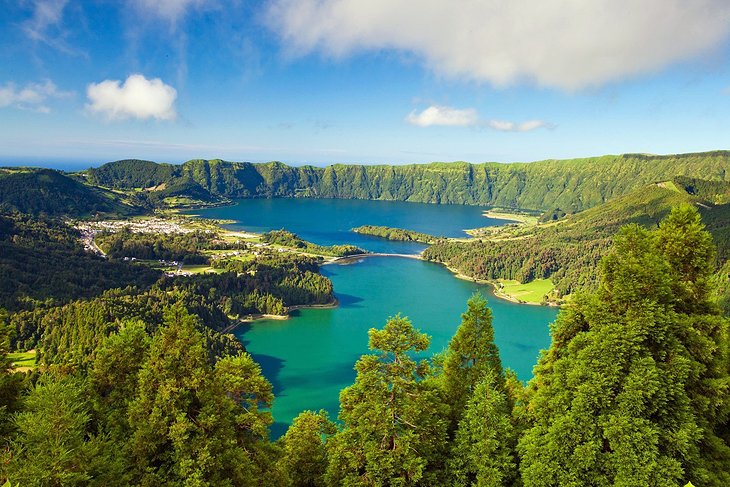
The spectacular volcanic caldera (crater) lake of Lagoa das Sete Cidades is one of the great natural wonders of the Azores archipelago. On the northwestern tip of São Miguel and reached by vehicle, the "Lake of Seven Cities" is absolutely mesmerizing in its beauty.
Nearly five kilometers in length, two kilometers wide, and roughly 12 kilometers in circumference, this is the largest freshwater lake in the Azores and in fact consists of two lagoons: the Green Lagoon and the Blue Lagoon. An emerald mantle of rolling hills and lush vegetation frames both, and in some places, the cliffs drop 500 meters into the mirror-like waters.
The pretty village of Sete Cidades lies on the crater floor and can be reached by crossing the road bridge that divides the two lakes.
You can easily spend a day here. The water's edge is a perfect place to unpack a picnic, and the more adventurous can follow one of the footpaths that skirt the crater's rim. A stunning panorama unveils itself from the Vista do Rei viewpoint, named from King Carlos's visit in 1901, where both lakes can be admired. Bear in mind that a capricious Mother Nature can sometimes spoil the scene with unpredictable spells of mist and rain, but even in these conditions the place is very atmospheric, if somewhat chilly.
Lagoa do Fogo
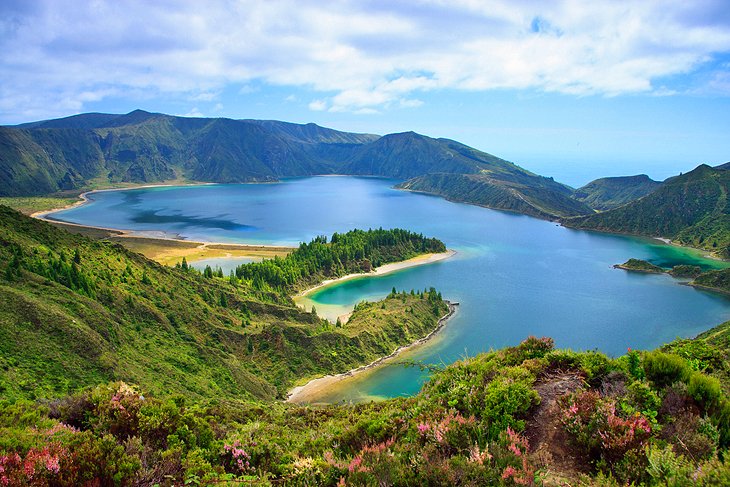
The "Lake of Fire" is another breathtaking caldera with a lake at the bottom. Its remote setting, more or less in the middle of São Miguel Island, makes this impressive volcanic crater especially appealing to outdoor enthusiasts - there is a moderately difficult 14-kilometer uphill walk that starts from Ribeira da Praia on the south coast that ends overlooking the crater's rim.
A steep, narrow path takes hikers down to the lake's edge and - believe it or not - a sandy beach. There are no settlements here. Instead, the whole area is a protected nature reserve, and the crater's walls are studded with a number of endemic plant species.
If heading to the lake by vehicle from the northern coastal town of Ribeira Grande, you can turn off the main road beforehand and explore Caldeira Grande. Here, you'll find a pool fed by a warm waterfall, where you can indulge in an invigorating mineral-rich bath - an idyllic way to soothe stiff joints and niggling aches and pains. It's a popular beauty spot, and you may have to share this natural "Jacuzzi" with the locals.
Furnas and the Caldeiras das Furnas
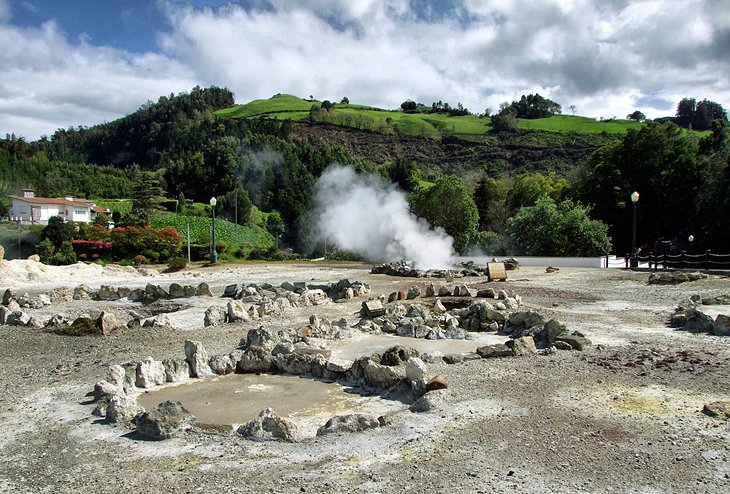
With its gushing geysers, burping mud, and hot bubbling springs, the spa resort of Furnas positively trembles with geothermal activity. A historically active volcanic complex, Furnas embraces a small village; a renowned spa facility; the verdant Parque Terra Nostra; and the impressive Lagoa das Furnas, the second largest lake on São Miguel.
There's been a functioning spa here since the 19th century, and patients still flock to its doors seeking remedies for skin complaints or hoping to alleviate tired and aching muscles. Sightseers, on the other hand, come here to cure their wanderlust.
There are dozens of hot springs, or fumaroles, dotting the landscape, gaping holes of boiling mineral waters that emerge from the ground, gasping and hissing and emitting a sulphurous, iron-laced vapor.
The northern shores of the Lagoa das Furnas, about two kilometers south of the village, are so hot that islanders come here to cook the famous Cozido nas Caldeiras - a rich meat and vegetable stew. The ingredients are placed in a sealed pot and lowered into a hole in the ground and left to cook slowly for up to seven hours.
Be sure to sample this unique island specialty in one of the traditional village restaurants, but leave time afterwards to walk off the rich concoction in the Terra Nostra botanical garden. In spring this well-tended oasis blossoms with hydrangeas, camellias, hibiscus, and magnolias. The garden, which is embellished with water features and planted with more than 2,000 different trees, is set within the Terra Nostra Garden Hotel, and non-residents are charged a modest entrance fee.
Official site: http://www.parqueterranostra.com
Plantações de Chá Gorreana
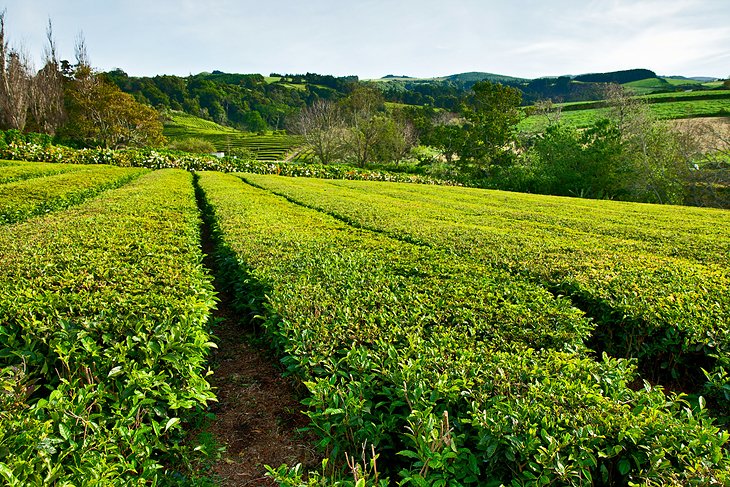
The Gorreana Tea Estate is the only tea plantation in Europe, and makes for a very interesting diversion. Family-owned and sited on gently undulating slopes near Ribeira Grande, the 50-hectare estate produces some 30 tonnes of tea a year.
Four different leaf varieties are organically grown and harvested here between April and September: green tea, black tea, orange pekoe tea, and broken leaf. You can walk the tidy terraces where the shrubs are cultivated before touring the factory to see the leaves being processed.
The most traditional aspect of the production line is the sorting room, where teams of ladies dressed in blue smocks and wearing hair nets sort and pack the tea by hand.
A small museum exhibits some of the original machinery used when production started in 1883, and an adjacent shop stocks individual packets of tea, as well as special presentation boxes containing all four varieties. You can also enjoy a cup or two on the terrace while admiring the fabulous sea views.
Address: Estrada Regional, Ribeira Grande, São Miguel, Azores
Official site: https://gorreana.pt/en/
Frequently Asked Questions
What are the best beaches near Ponta Delgada?
Praia das Milícias: Also known as Praia Grande, this is the largest and most popular of São Miguel's beaches. Located five kilometers from Ponta Delgada, Milícias is blanketed with dark volcanic sand, a natural feature typical of all the islands in the Azores archipelago. A huge beach (in English grande means "big"), Milícias is a favorite with families, drawn to the warm, shallow waters that lap the beach and the leisure amenities that include cafés, toilets, and showers, and access for those with mobility issues.
Praia do Pópulo: As its name suggests, this popular stretch of sand is a real crowd-pleaser, especially with surfers. Located in Rosto de Cão on the outskirts of Ponta Delgada, this is a small, fairly exposed beach that has reasonably consistent surf. A year-round hit with the surfing fraternity, Pópulo fills up in summer with sunseekers.
Água de Alto: A 30-minute drive east out of Ponta Delgada brings you to Água de Alto, which is situated in Vila Franca do Campo. Set in a sheltered bay and blessed with a generous swathe of sand, Água de Alto is one of the more tranquil beaches on the island: there is just one café serving the area, and beach facilities are limited.
When is the best time to visit Ponta Delgada?
| Average minimum and maximum temperatures for Ponta Delgada, Portugal in °C | |||||||||||
| J | F | M | A | M | J | J | A | S | O | N | D |
| 17 12 | 17 11 | 17 12 | 18 12 | 20 13 | 22 15 | 24 17 | 26 18 | 25 18 | 22 16 | 20 14 | 18 13 |
| PlanetWare.com | |||||||||||
| Average monthly precipitation totals for Ponta Delgada, Portugal in mm. | |||||||||||
| 132 | 107 | 99 | 71 | 53 | 38 | 31 | 38 | 86 | 114 | 130 | 127 |
| Average minimum and maximum temperatures for Ponta Delgada, Portugal in °F | |||||||||||
| J | F | M | A | M | J | J | A | S | O | N | D |
| 62 52 | 62 51 | 63 52 | 64 53 | 67 55 | 71 59 | 75 63 | 78 65 | 76 64 | 71 60 | 67 57 | 64 54 |
| PlanetWare.com | |||||||||||
| Average monthly precipitation totals for Ponta Delgada, Portugal in inches. | |||||||||||
| 5.2 | 4.2 | 3.9 | 2.8 | 2.1 | 1.5 | 1.2 | 1.5 | 3.4 | 4.5 | 5.1 | 5.0 |
The Azores' famously capricious weather is sometimes difficult to predict, although it's mild year-round. Generally, however, the summer months herald a dry, sunny, though often humid interlude. The best time to visit Ponta Delgada is late spring. Rain is infrequent, the flowers are still vibrant, and the city is still relatively devoid of tourists. But the whales have arrived!
More Must-See Sights in Portugal: Islands and Mainland
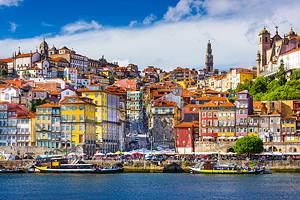
If you've fallen for the charm and beauty of the Azores, your next visit to Portugal should include the Madeira archipelago, the country's other volcanically charged destination. Funchal is the port of entry for all visitors. Back on the mainland, tick off the best places to visit and then follow our great itineraries to make the most out of your time exploring this small but hugely diverse nation.


